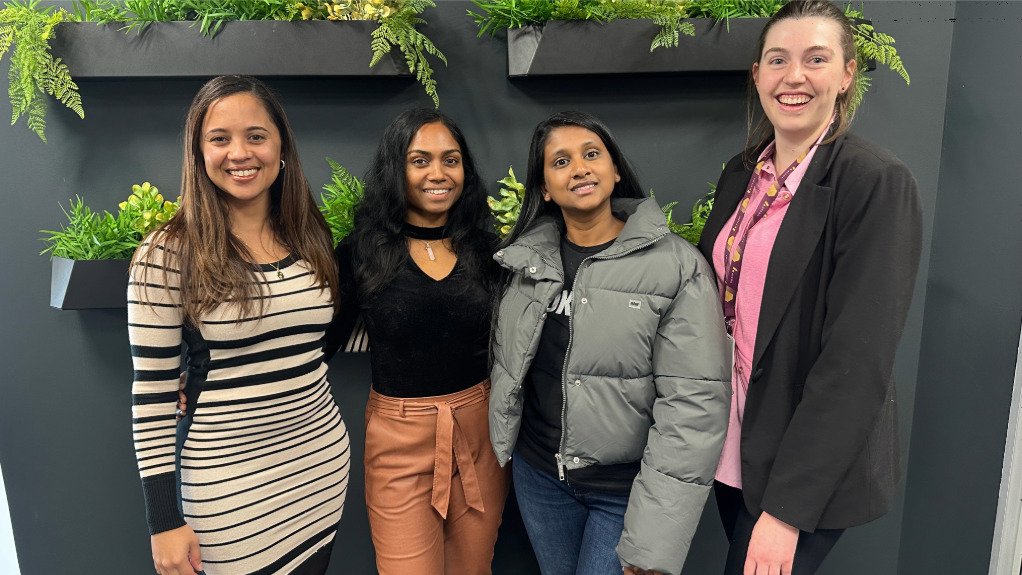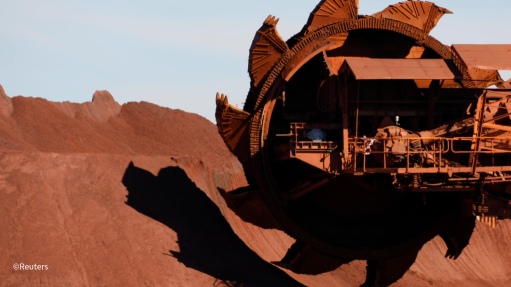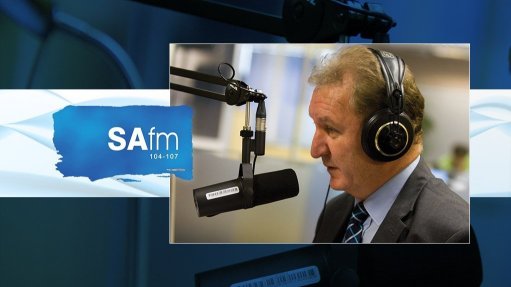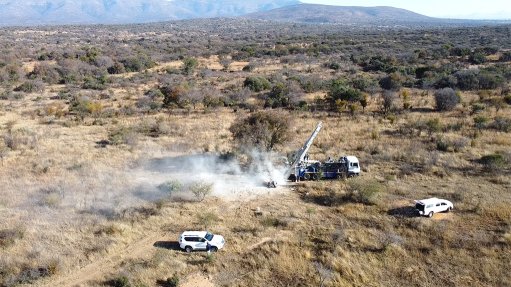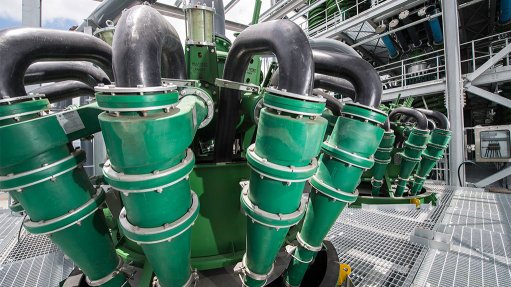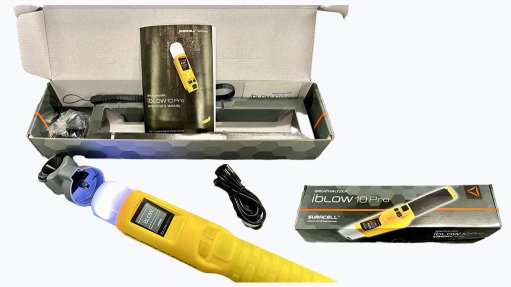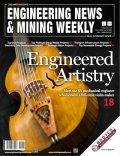Blueprints for balance
Not long ago, walking into a project meeting and spotting more women than men was unusual. That picture is changing, gradually but measurably. The Engineering Council of South Africa’s (ECSA’s) 2024 report reveals that, while men still make up the majority of registrations, the number of women is steadily increasing, going from 6883 registrations in 2022/23 to 8002 in 2023/24.
At Atana, many teams are already helping to shift the numbers. In aviation, five out of twelve engineers are women, a ratio Associate Director Kreanta Moodley calls a step in the right direction: “It’s encouraging to see similar progress with partner companies, where there’s also strong women leadership representation.”
But representation is only part of the story. For progress to last, it must be matched with retention, equity and opportunity.
Representation must be intentional
Shifts like this are no accident. Executive Director at Atana, Bongani Mthombeni, believes companies should actively create opportunities. “It’s about taking intentional steps to advance women in engineering,” she says. “There’s been a stronger focus on equality and ensuring equal opportunities for everyone, and the result is that more women are represented than before.”
For Bongani, the value extends far beyond headcounts. A variety of perspectives at the table changes how projects are negotiated, designed and delivered. And in a country as diverse as South Africa, infrastructure must be conceived and executed with that diversity in mind - from the drawing board to delivery.
Beyond the boardroom
The journey from office to construction site remains one of the profession’s most challenging transitions. Although better-fitting PPE, separate ablutions, and clearer safety protocols have improved conditions, cultural shifts are slower to take hold.
Loshini Naicker, a civil engineering technologist, welcomes the progress but knows there’s more to do, saying, “We now have safety gear that’s better suited for women, and that’s a real improvement. The goal is for everyone to feel comfortable on site without having to change who they are.”
Civil Engineer and Project Manager for Aviation, Jody Appollis, believes that one of the real markers of progress will be when no career path is determined by whether a site is considered “safe enough”. “Physical and emotional safety go hand in hand. The right support means being able to take on any site or role with confidence,” she says.
Going from roadblocks to runways
- When representation expands, so does the profession’s capacity to deliver better results. Sustaining progress means turning barriers into action points:
- Safety first, everywhere: Make both physical and cultural site safety a standard on every project.
- Confidence to speak up: Build environments where people can raise concerns and ideas without hesitation.
- Flexible approaches: Replace outdated “toughen up” mindsets with ways of working that adapt to individuals.
- Mentors who open doors: Establish mentorship and networking systems that connect emerging engineers to real opportunities.
- Clear career maps: Set out defined routes to professional registration and progression to keep talent engaged.
- Life-friendly work models: Offer flexibility so engineers can stay in the profession through different life stages.
Staying matters as much as starting
Retention remains one of the sector’s biggest challenges. According to the World Economic Forum, around 70% of women who earn engineering degrees leave the profession at some point, often citing feelings of isolation or a lack of support.
Although the statistic is ten years old, it still points to a trend that hasn’t fully disappeared, as Associate Director for Water Abimbola Sole notes from her own experience: “Around the 10-year mark, I’ve seen many female engineers shift from technically intensive engineering into consultancy or other roles that offer more flexibility. It’s often about finding the right balance for the stage of life you’re in.”
This comes at a time when South Africa faces a shortage of engineers in critical fields such as electrical, civil and mechanical engineering. Increasing the number of women in these roles could help close this skills gap and contribute to long-term national development.
Why women choose engineering
Jemma Dawson is a candidate engineer and was a finalist for the CESA 2025 Aon Engineering Excellence Awards in the Young Engineer of the Year category. For her, it’s the satisfaction of seeing her designs take shape in the real world. “Engineering is super-creative, and you can see what you design form into a building. There’s nothing more fulfilling than watching your work come to life,” she says.
Wastewater Specialist, Dr Kerusha Lutchmiah, entered the field with a clear mission: “Engineering found me. I wanted to work in water so I could bring those skills home, help my country and make a positive impact on people’s lives in the process.”
A pipeline worth protecting
“The more women who enter engineering, the more equitable the built environment becomes. That benefits everyone,” says Bongani.
The future of engineering is about ensuring those who walk through it can stay, contribute and lead comfortably while shaping projects, communities and the profession for decades to come.
Article Enquiry
Email Article
Save Article
Feedback
To advertise email advertising@creamermedia.co.za or click here
Press Office
Announcements
What's On
Subscribe to improve your user experience...
Option 1 (equivalent of R125 a month):
Receive a weekly copy of Creamer Media's Engineering News & Mining Weekly magazine
(print copy for those in South Africa and e-magazine for those outside of South Africa)
Receive daily email newsletters
Access to full search results
Access archive of magazine back copies
Access to Projects in Progress
Access to ONE Research Report of your choice in PDF format
Option 2 (equivalent of R375 a month):
All benefits from Option 1
PLUS
Access to Creamer Media's Research Channel Africa for ALL Research Reports, in PDF format, on various industrial and mining sectors
including Electricity; Water; Energy Transition; Hydrogen; Roads, Rail and Ports; Coal; Gold; Platinum; Battery Metals; etc.
Already a subscriber?
Forgotten your password?
Receive weekly copy of Creamer Media's Engineering News & Mining Weekly magazine (print copy for those in South Africa and e-magazine for those outside of South Africa)
➕
Recieve daily email newsletters
➕
Access to full search results
➕
Access archive of magazine back copies
➕
Access to Projects in Progress
➕
Access to ONE Research Report of your choice in PDF format
RESEARCH CHANNEL AFRICA
R4500 (equivalent of R375 a month)
SUBSCRIBEAll benefits from Option 1
➕
Access to Creamer Media's Research Channel Africa for ALL Research Reports on various industrial and mining sectors, in PDF format, including on:
Electricity
➕
Water
➕
Energy Transition
➕
Hydrogen
➕
Roads, Rail and Ports
➕
Coal
➕
Gold
➕
Platinum
➕
Battery Metals
➕
etc.
Receive all benefits from Option 1 or Option 2 delivered to numerous people at your company
➕
Multiple User names and Passwords for simultaneous log-ins
➕
Intranet integration access to all in your organisation



